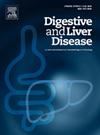Characterization of a cohort of liver transplant patients for HBV and/or HBV/HDV related complications: results of a Campania multicenter study
IF 4
3区 医学
Q1 GASTROENTEROLOGY & HEPATOLOGY
引用次数: 0
Abstract
Introduction
Liver transplantation is a life-saving treatment option for patients with complications related to HBV and/or HBV/HDV-related liver disease.
Methods
A multicenter retrospective study was conducted including 5 infectious disease or hepatology units in Campania. Patients receiving liver transplants for HBV and/or HBV/HDV-related complications were enrolled in post-transplant follow-up from 1 to a maximum of 20 years. The characteristics of patients with monoinfection were compared with those of HBV/HDV coinfected patients.
Results
We enrolled 233 patients, 109 of whom had confirmed HVB/HDV coinfection. Patients were predominantly male (76.4%), with a median age of 56 years, of whom 9.6% were HCVAb positive and 0.7% HIVAb positive; the median years of liver transplantation was 8 years. 64.5% of patients had a diagnosis of HCC at the time of transplantation. The comparison between the subjects transplanted for HBV and HBV/HDV did not show statistically significant epidemiological and demographic differences (table 1). During follow-up, 31.6% of patients had a clinical event: 6.4% liver-related and 27.8% not liver-related. Renal failure (20.9%) and cancer (12.85%) were the most frequent new-onset clinical events, with similar incidence between HBV patients and those with HBV/HDV coinfection (table 2). Patients in whom an adverse clinical event occurred were mostly men (79.7%, n.s.) (table 3). Only 4.2% of patients died during follow-up and of these only one death was related to a hepatic event (table 2). Comparing the characteristics (Table 4): they were all men (100% vs 75.3%; p = 0.122), they had been transplanted for longer (16 years vs 8; p = 0.059), 50% had been transplanted before 2010 and 50% of them were HDV coinfected (50%vs62.7%;p=0.674).
Conclusions
our study highlights a good outcome during follow-up and does not show different clinical evolution between liver transplant patients for HBV monoinfection and HBV/HDV coinfection.
求助全文
约1分钟内获得全文
求助全文
来源期刊

Digestive and Liver Disease
医学-胃肠肝病学
CiteScore
6.10
自引率
2.20%
发文量
632
审稿时长
19 days
期刊介绍:
Digestive and Liver Disease is an international journal of Gastroenterology and Hepatology. It is the official journal of Italian Association for the Study of the Liver (AISF); Italian Association for the Study of the Pancreas (AISP); Italian Association for Digestive Endoscopy (SIED); Italian Association for Hospital Gastroenterologists and Digestive Endoscopists (AIGO); Italian Society of Gastroenterology (SIGE); Italian Society of Pediatric Gastroenterology and Hepatology (SIGENP) and Italian Group for the Study of Inflammatory Bowel Disease (IG-IBD).
Digestive and Liver Disease publishes papers on basic and clinical research in the field of gastroenterology and hepatology.
Contributions consist of:
Original Papers
Correspondence to the Editor
Editorials, Reviews and Special Articles
Progress Reports
Image of the Month
Congress Proceedings
Symposia and Mini-symposia.
 求助内容:
求助内容: 应助结果提醒方式:
应助结果提醒方式:


